- News
- Reviews
- Bikes
- Components
- Bar tape & grips
- Bottom brackets
- Brake & gear cables
- Brake & STI levers
- Brake pads & spares
- Brakes
- Cassettes & freewheels
- Chains
- Chainsets & chainrings
- Derailleurs - front
- Derailleurs - rear
- Forks
- Gear levers & shifters
- Groupsets
- Handlebars & extensions
- Headsets
- Hubs
- Inner tubes
- Pedals
- Quick releases & skewers
- Saddles
- Seatposts
- Stems
- Wheels
- Tyres
- Tubeless valves
- Accessories
- Accessories - misc
- Computer mounts
- Bags
- Bar ends
- Bike bags & cases
- Bottle cages
- Bottles
- Cameras
- Car racks
- Child seats
- Computers
- Glasses
- GPS units
- Helmets
- Lights - front
- Lights - rear
- Lights - sets
- Locks
- Mirrors
- Mudguards
- Racks
- Pumps & CO2 inflators
- Puncture kits
- Reflectives
- Smart watches
- Stands and racks
- Trailers
- Clothing
- Health, fitness and nutrition
- Tools and workshop
- Miscellaneous
- Buyers Guides
- Features
- Forum
- Recommends
- Podcast
feature
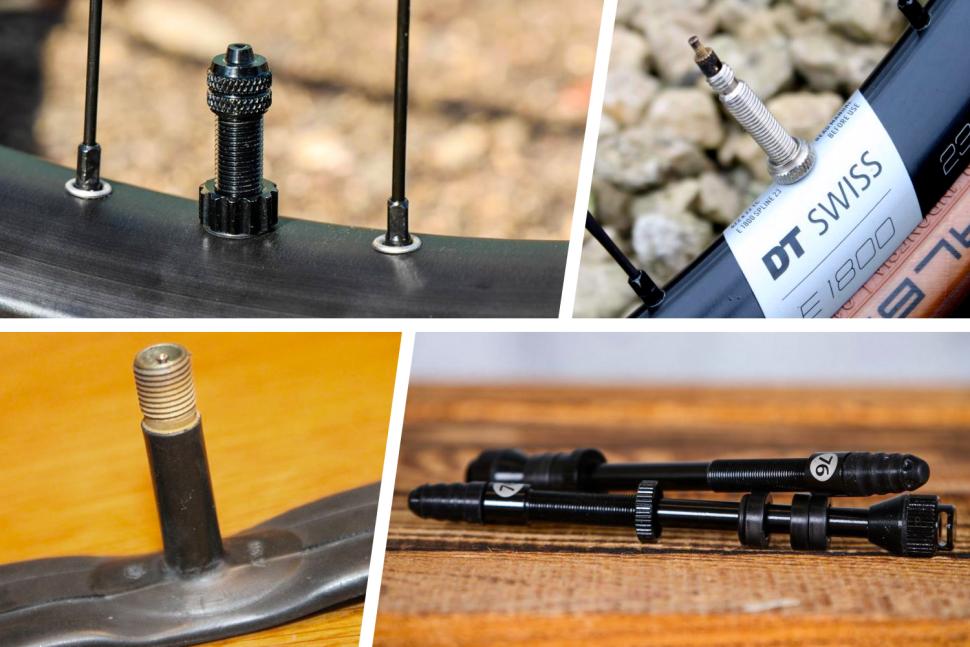 Valves exposed March 2024
Valves exposed March 2024Valves exposed: the whole squalid truth! Well, kind of...
We’re tackling valves – everything you need to know about them, including the options open to you and whether or not you should use the dust cap.
We’ve always liked to bring you hard-hitting journalism here on road.cc. Historically, who can forget Eurobike 2011: The rise and rise of the chain catcher, for example? Cutting-edge stuff, I think you’ll agree. We don’t shy away from the big issues.
Before we get stuck into valves, let’s make sure that everyone is up to speed on the basics. This is a Presta valve (above).
And this is a Schrader valve (below), which you'll also see used for car tyres and various other applications...
Presta is skinnier, and rather than being hidden away inside, the valve core is partially exposed. You might find Schrader valves on lower-end mountain bikes, hybrids, folders, and kids' bikes, but Presta rules the cycling world. There were more Schrader-equipped mountain bikes in the past, but tubeless has been the norm in off-road riding for a long time, and tubeless valves are Presta (or close cousins).
> Should you get tubeless tyres? Are they your best option?
Although some smart heads fit both Presta and Schrader, as a rule, you'll need a pump attachment that's specific to the type of valve you have on your bike.
Right, let’s get cracking…
We mostly use Presta valves, but would Schrader make more sense?
US company Jones Bikes switched from using Presta to Schrader valves on its bikes last year. That’s not exactly front-page news for us over here in the UK, but it brought up an interesting point.
Jeff Jones said, “After comparing and testing Presta and Schrader valve stems, it makes sense to change from Presta to Schrader.
“We flow-tested 10 tubeless valve stems, including Presta, Schrader, and a Fillmore high-flow stem, to see the differences and to find the stem with the most flow because tubeless valve stems with a higher flow rate make mounting tubeless tyres easier.”
Jones Bikes devised an experiment using water to find out which valves offered the highest flow. It tested valves with the core in place, and valves with the core removed. You can check out this video to find out exactly what happened…
Watched it? If not, spoiler alert! According to this test, the Jones Spec Schrader valve stem – with the core removed – offered the highest level of flow, which isn’t surprising. Jones Bikes probably wouldn’t have bothered making a video if its product didn’t do well. Other Schrader valves with the core removed performed strongly too.
Prestas with the valve core in place were down at the bottom, while Prestas with the valve core removed offered various flow levels. According to Jones Bikes, though, if you’re inflating a tyre set up tubeless – which requires a certain punch to make it seat – Schrader makes more sense.
Why do we mostly use Presta in cycling?
“In the 1890s the Presta valve stem was designed with a smaller diameter,” says Jeff Jones. “This allowed for the drilling of smaller holes in the narrow wooden rims of the time, leaving more wood behind to reduce the risk of cracking.
“Now, with wider aluminium and carbon fibre rims, the small Presta size is not needed. Schrader is wider, sturdier, and has a removable valve core that doesn't clog.”
Of course, Jones Bikes wants to beat the drum for its own valves (above).
“Jones Schrader valve stems have a larger inside diameter which gives them more flow than high-flow Presta valve stems and other Schrader stems,” says Jeff Jones. “It’s also lighter than many Presta valve stems.”
The bike industry should switch to Schrader, then? Case closed? It’s not as simple as that. For a start, Jones Bikes uses big ol’ wheels and tyres, but there’s a whole other side to cycling.
Zipp’s product manager Nathan Schickel says, “When putting holes in a carbon rim, it is always better to move toward the smallest hole possible. Creating a bigger hole means more reinforcement around that hole, which means higher weight. Because of this, we stay with Presta.”
Rims come in different widths, with road models tending to be narrower than mountain bike options. This affects the amount of space available for the valve.
Hunt Bike Wheels founder Tom Marchment says, “If you did try to use Schrader with a road-width tubeless rim, you would be making quite a large hole in the small area where you’re trying to create a seal and fit a tyre bead inside the rim sidewall.
“From a tubeless point of view, the hole in your rim needs to be big enough that when you put your valve in with a rubber bung, it meets in a way that the rubber seals really well. With a Presta valve, you don’t need as large a rubber bung because your valve stem is smaller.
“When you’re talking about a road rim with a 21mm internal width and you need shoulders [in the tyre bed] for tubeless tyres [to help the bead seat], it starts getting a bit tight if you have to make the hole 9-10mm wide [for Schrader] in the rim bed instead of being 7-8mm wide [for Presta].”
“The external diameter of the aluminium at the bottom of a Presta valve is 6.7mm, and it’s 8mm on Schrader, but the bung is wider than that. The hole on the inner side of the rim needs to be considerably larger because the rubber part extends out.”
Zipp’s Nathan Schickel says. “We’re still choosing Presta primarily for weight and also because we haven’t yet found a better solution that meets the needs of our customers: to fit in a small hole in the rim; allow for a high flow of air into the wheel for tyre seating; does not clog, but allows for sealant to pass through easily; fits standard pumps and CO2 inflators without adaptors.”
In other words, don’t expect a mass change from Presta to Schrader anytime soon.
How to get more air through a Presta valve
What about getting more air through Presta valves to help seat a tubeless tyre? You can use a CO2 pump (some brands say that CO2 exposure can cause their sealants to separate, others say it's fine with their products) or a floor pump.
A two-stage floor pump can be useful. Initially, you want a high-volume pump that seats the tyre and pushes a large amount of air inside. Beyond about 30psi, it’s useful to have a high-pressure pump that allows you to get more air inside without the handle being too hard to press.
Something like the Topeak JoeBlow Tubi 2Stage floor pump that we reviewed allows you to switch between the two modes, and it does an excellent job.
> Review: Topeak JoeBlow Tubi 2Stage floor pump
A floor pump with a pressurised chamber gives you a bit of extra oomph – something like the Bontrager TLR Flash Charger floor pump that we reviewed a few years ago. Essentially, you pump loads of air into a chamber and then let it into your tyre in one go.
> Check out our review of the Bontrager TLR Flash Charger floor pump
Plenty of other brands offer something similar. The JoeBlow Booster is very good, for example. Again, you charge the in-built chamber and blast the air into the tyre in one go.
> Review: Topeak JoeBlow Booster track pump and tubeless inflator
It’s common to remove a Presta valve core to inflate a tubeless tyre the first time. Once seated, you can disconnect the pump head, attempt to replace the core as quickly as possible before all the air comes out again, and re-inflate.
There's a bit of an art to getting the core in before all the air has escaped (the hammer in the vid is just for illustration purposes; there's no need to start whacking your tyres).
Failing that, you can just let the air out and hope the tyre has stayed seated, or at least partially seated, so it's now easier to inflate.
Some brands have introduced their own tubeless valves that are designed to make things simpler without the need for a larger hole in the rim. Reserve says that its Fillmore Valves, for example, offer three times the airflow of standard Presta valves “to make seating tubeless tyres a snap”.
“The patented Fillmore valve represents a game-changing leap forward in technology, with a high-flow design that eases tubeless setup and eliminates the traditional, delicate, clog-inciting valve core of yesteryear,” says Reserve.
When Tom Weijand reviewed them for road.cc, he said, “The Reserves are not strictly Prestas, they're a Presta-compatible reimagining of a bike valve that prioritises high flow rate and prevents clogs. And they succeed. Wildly.”
> Read our review of Reserve Fillmore Valves
We gave the Reserve Fillmore valves our Editor's Choice award in the road.cc Recommends Components of the Year 2023/24. They are priced individually at £34.99 (for the 50mm version).
Topeak has a very different solution.
“In most cases, inflating a tyre without a compressor means removing the valve core to allow a higher flow of air to enter the tyre and seat the tyre bead, but refitting the valve core without the tyre becoming completely deflated and the bead coming away from the rim bead is a real challenge,” says Richard Jones of Topeak’s UK distributor Extra.
“The Topeak TubiHead is a valve head that attaches to Presta valves. You can then unscrew the valve core and remove it from the valve and inflate the tyre, all without the need for removing the pump head from the valve. Then, whilst holding the pressure within the tyre and TubiHead, you can refit the valve core in one seamless action without air loss or messy sealant leaks.”
Getting that? You’d prefer a video, right?
It’s a clever idea. Does it work? Absolutely. We had our man Mike Stead on the case a couple of years ago, and he rated the design highly. A Topeak TubiHead Upgrade Kit is £29.99.
Integrated versus removable valve cores: who wins?
Some Presta valve cores are integrated (below)...
...while others can be taken out and replaced via a tiny valve core removal tool (below). There are advantages to each.
If you use a tubeless valve with a removable core, you can take it out and top up the sealant through the hole without needing to take the tyre bead off the rim. You can also replace the core with a valve extender that has a core at the top (below, red), for use with deep-section wheels.
If you have a new inner tube with a removable core, make sure it's screwed tightly into the body of the valve so that it doesn't accidentally come out the first time you want to top up with air.
With an integrated core, there’s no chance of accidental removal when you inflate your tyres.
You can use valve extenders with integrated core valves – but only the type that fits over the top of the existing valve core (above, brass) rather than replacing it.
How can you combat clogging?
Clogging can be an issue with tubeless valves. The clearances in a Presta valve are smaller than some holes in your tyre that the sealant is designed to plug, so it’s not surprising that they can get bunged up.
What can you do about it? You can remove the valve core and clean out hardened sealant in the valve stem with something like an old spoke. Topeak has a Tube Valve Cleaner especially for the job (£12.99). It allows you to remove the core and then clear any clogging.
If there’s sealant clogging the valve core, you can carefully try to get it out with a pin or, worst-case scenario, replace it.
Like the Fillmore Valves mentioned above, the 76 Projects Hi Flow No Clog Tubeless Valves that we reviewed last year are designed to avoid the problem in the first place. Chad Scallan described them as an “innovative and effective way to combat clogged valves” and “a gamechanger” in this respect. The internal clearances are much greater than on a Presta valve to avoid the build-up of sealant.
> Review: 76 Projects Hi Flow No Clog Tubeless Valves
“If you're forever finding yourself stuck with clogged-up tubeless valves, or you’re just looking into setting up your bike with tubeless tyres, these valves are ideal,” Chad said. “They improve pumping efficiency and they don't clog up – exactly what’s needed in a pair of tubeless valves.”
Should you use the knurled valve lock nut?
If you have your tyres set up tubeless, you have to use a tubeless valve, of course, with a lock nut that's an integral part of the system, holding the bottom of the stem tightly on the rim. If you’re running inner tubes, you’ll usually get a valve lock nut – a knurled collar that's sometimes called a rim nut – threaded to the stem (not always; some valve stems aren’t externally threaded). Should you use it?
Some valve lock nuts have a shoulder for centring a Presta valve stem in a Schrader-sized hole. Others have a uniform thickness. What if you’re using a Presta valve in a rim that’s made for Presta?
“The nut serves a few purposes,” says Schwalbe's Tim Ward. “It holds the valve in place so that when inflating from flat, you can push the pump head onto the valve without the valve disappearing into the tyre.
“It can stop the valve rattling in the rim, and to some extent, it can help to prevent valve tear-off caused by the tyre slipping around the rim slightly under heavy braking forces.
“All Schwalbe butyl tubes with either a Presta or Schrader valve have a threaded valve stem and rim nut. However, our Aerothan TPU [thermoplastic polyurethane] tube has a valve stem made from lightweight plastic (and is therefore less likely to have any rattling issues) that's not threaded and has no rim nut. Various other tube brands on the market don’t have threaded valve stems on some of their tubes.
“Is a rim nut essential? Probably not, and it's largely down to personal choice. I always fit one, more out of habit than anything, and a valve dust cap as well (see below), as keeping water, muck, and road salt out of the valve just seems like a good idea to me.”
Some people swear by the lock nut to hold the valve in place when using a pump. However, Vittoria suggests only tightening it in place after you've pumped up the tube.
“Valve tear-off can be caused by the valve lock nut being threaded onto the valve too tightly before the tube is inflated – the valve can then tear away from the inner tube when the tube is inflated,” says Vittoria. “For this reason, we recommend only threading the lock nut onto the valve once the tube has been inflated.”
We did a quick survey here at road.cc and off.road.cc and found that most of us do use the lock nut when riding with inner tubes.
“I fit it, otherwise, the rattling of the valve in the rim drives me insane,” said our man George Hill.
Stu Kerton, Suvi Loponen, Matthew Page, Simon Withers, Steve Williams – in fact, everyone else on the team whom I hassled for an answer – said they use the lock nut too.
Me? Those collars go straight into the ‘just in case’ section of the toolbox and never re-emerge – but it looks like I’m very much in the minority here. Rattling? The voices inside my head must drown it out.
What about the dust cap?
In terms of function, what does the cap on a Presta valve do? It might stop the top of the valve from damaging the inner tube when it’s in the packet, your saddle pack, or a rear pocket, but what about when you're riding?
“We recommend that you use the caps as they prevent dirt from coming into the inner tube or tubeless system,” says Alexander Hänke, who works in product management in Continental’s bicycle tyre division.
“The cap prevents the valve top from corroding. If consumers bin them, it is not satisfying, but there is no legal requirement to use them.”
That’s the official line. Some people think they’re the finishing touch too.
“When it comes to dust caps, I guess some people like how they look,” says Zipp’s product manager Nathan Schickel.
Again, we had a discussion among the road.cc and off.road.cc teams to get a snapshot of opinions.
“I never use them,” says Steve Williams. “The dust cap serves no purpose on a Presta valve.”
There are plenty of fans, though.
Aaron Borrill, editor of off.road.cc, says he uses the dust cap for mountain biking because it offers a tiny bit of protection against stones, rocks, and anything else that’s flying about.
Director of content Tony Farrelly says, “When I ran tubes, I used valve caps until I lost them, but after a few months of winter riding, I had the core snap off on more than one occasion, once in the pump, which was a mighty pain.
“If you're running tubeless, that core is even more important, so it's even more crucial to protect it if you ride in all weathers.”
It’s worth pointing out that some valve caps have a side hustle, too.
“We've designed a valve cap with a little core remover on the end,” says Hunt’s Tom Marchment. “It allows you to take the valve core on and off more easily. We've already implemented that on mountain bike wheels, we're about to add them to gravel wheels, and might well add them to road wheels soon.
“It means that if you need to re-inflate after putting tyre bungs/anchovies in a puncture, you can take the valve core out for higher airflow.”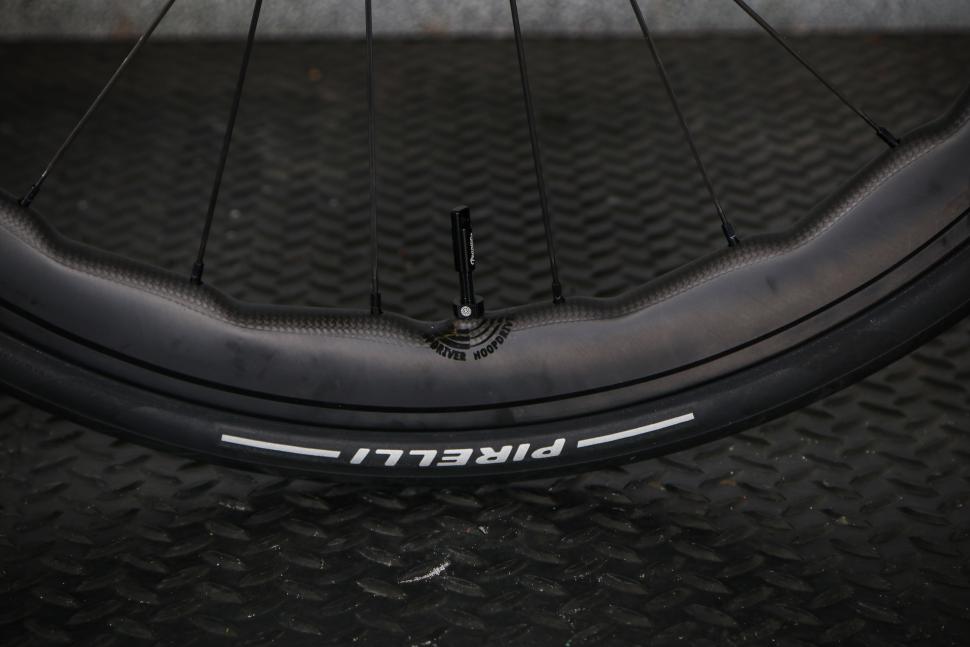 Plenty of other brands, like Peaty’s and Muc-Off, have valve caps that do a similar job – Peaty's also has a spoke key – so you might want to check before you bin ’em in future.
Plenty of other brands, like Peaty’s and Muc-Off, have valve caps that do a similar job – Peaty's also has a spoke key – so you might want to check before you bin ’em in future.
Let us know where you stand on these big issues in the comments below.
Mat has been in cycling media since 1996, on titles including BikeRadar, Total Bike, Total Mountain Bike, What Mountain Bike and Mountain Biking UK, and he has been editor of 220 Triathlon and Cycling Plus. Mat has been road.cc technical editor for over a decade, testing bikes, fettling the latest kit, and trying out the most up-to-the-minute clothing. He has won his category in Ironman UK 70.3 and finished on the podium in both marathons he has run. Mat is a Cambridge graduate who did a post-grad in magazine journalism, and he is a winner of the Cycling Media Award for Specialist Online Writer. Now over 50, he's riding road and gravel bikes most days for fun and fitness rather than training for competitions.
Latest Comments
- chrisonabike 2 sec ago
Pretty sure a lot of that "more space for motor vehicles" was because fewer motor vehicles (also marginally "smaller motor vehicles")....
- David9694 46 min 59 sec ago
I get the impression he represented himself, came over as a bit of an ass and received a ban, when a lawyer might have got him spared that.
- Rendel Harris 50 min 3 sec ago
Well if you ever get the chance and you feel yourself flagging give me a shout, happy to put in a shift.
- Rendel Harris 51 min 47 sec ago
Would the Gravaa system work with inserts? I don't know technical ins and outs of the system but at a guess I would think that the amount of valve...
- Laz 58 min 14 sec ago
OMG- that's so self centred....what about the brotherhood and sisterhood of enjoying a ride and sharing a happy wave with a fellow rider out...
- thax1 1 hour 25 min ago
Cycliq certainly seemed to let a lot of people down in the early days. I held off until the 12 Sport came out, but have been impressed....
- ktache 1 hour 26 min ago
My better half seems to like giving me pressies of Rapha clothing. I am wearing their casual hoodie right now, and very nice it is too. First off...
- thax1 1 hour 36 min ago
Push on through foot numbness and you then arrive at agonising foot cramp....
- Destroyer666 2 hours 14 min ago
Oh dear, to your own lack of understanding. I was not referring to your vague generalisation of "people", I was referring to a particular...
- chrisonabike 3 hours 35 min ago
Easy one that: it wasn't "so much traffic" before the cyclist was there! That queue had been building up behind the cyclist since the lane was...
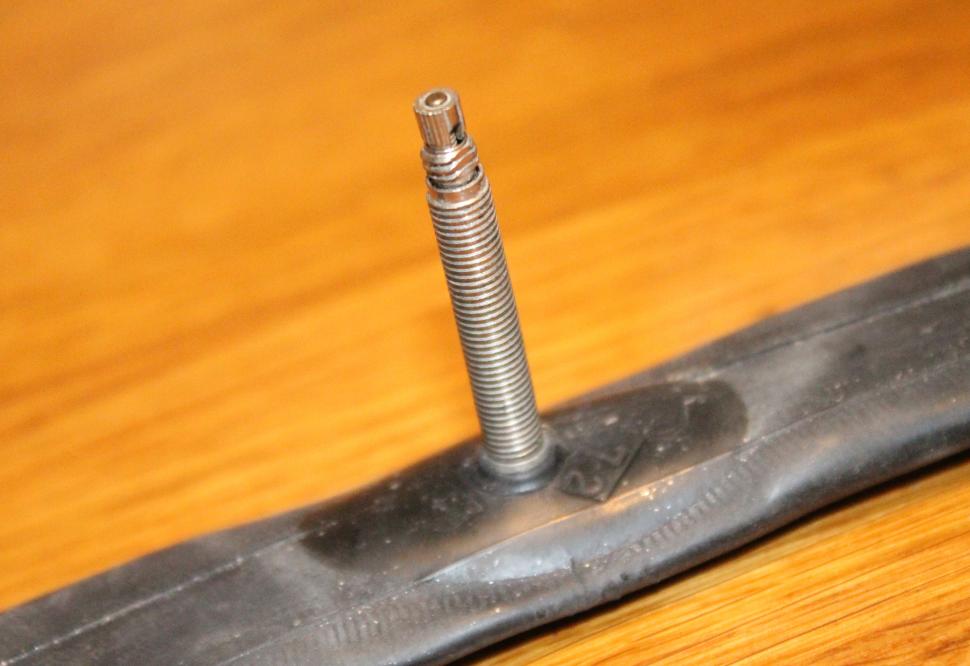
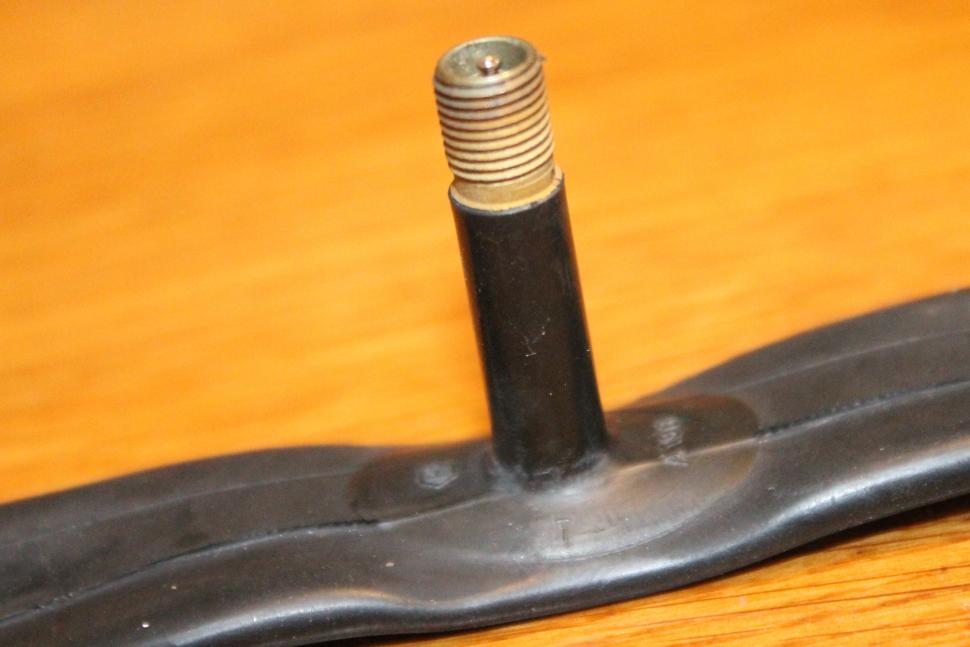

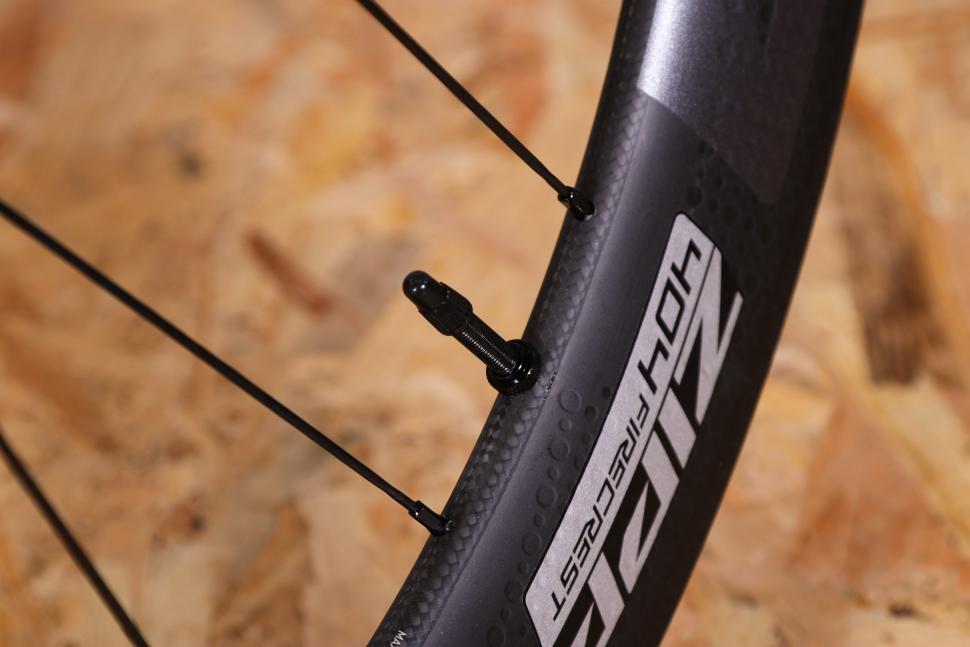
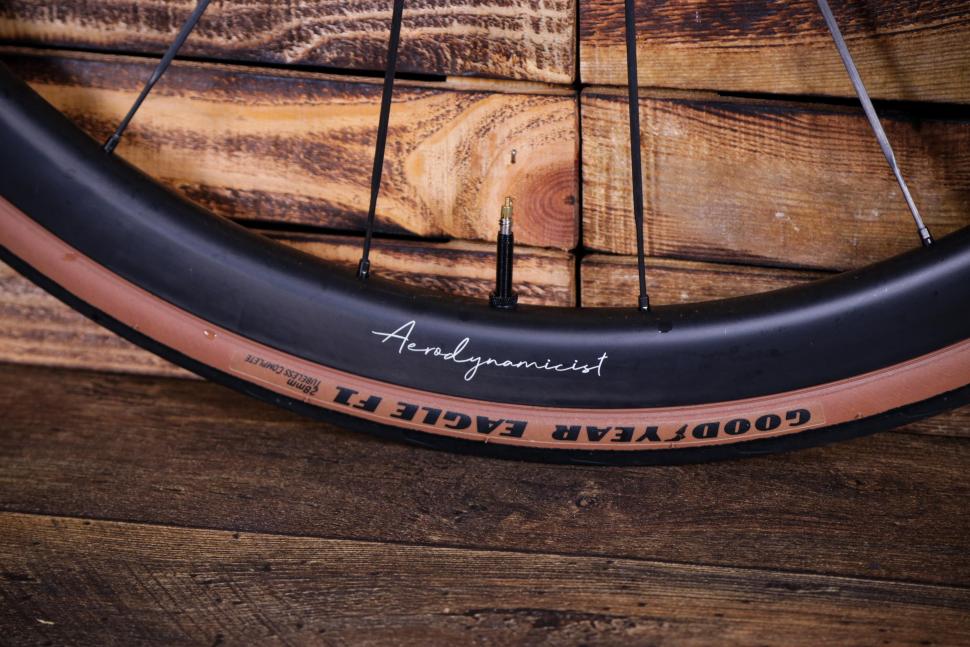

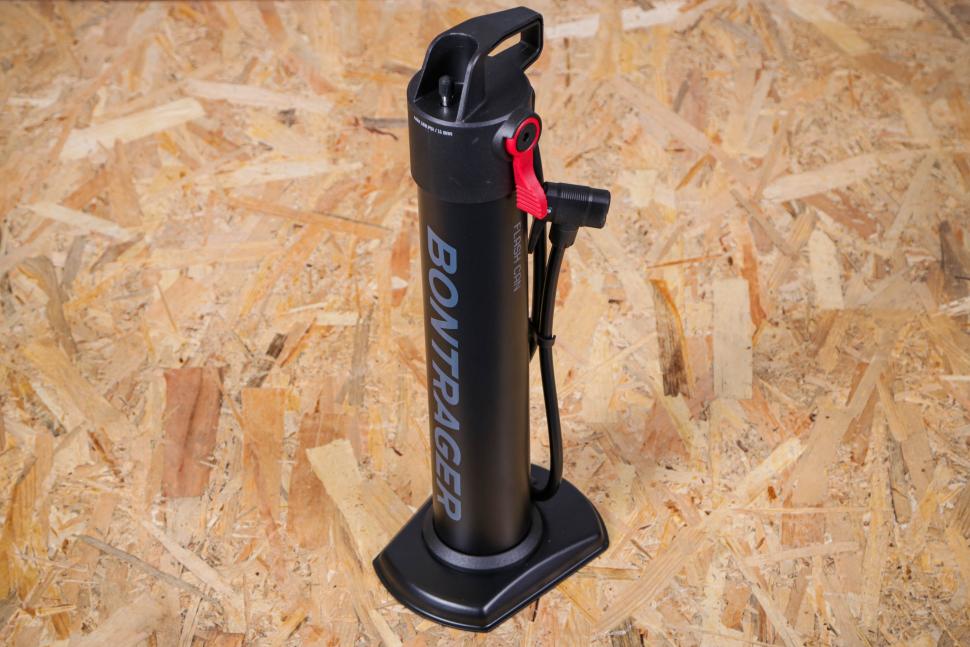

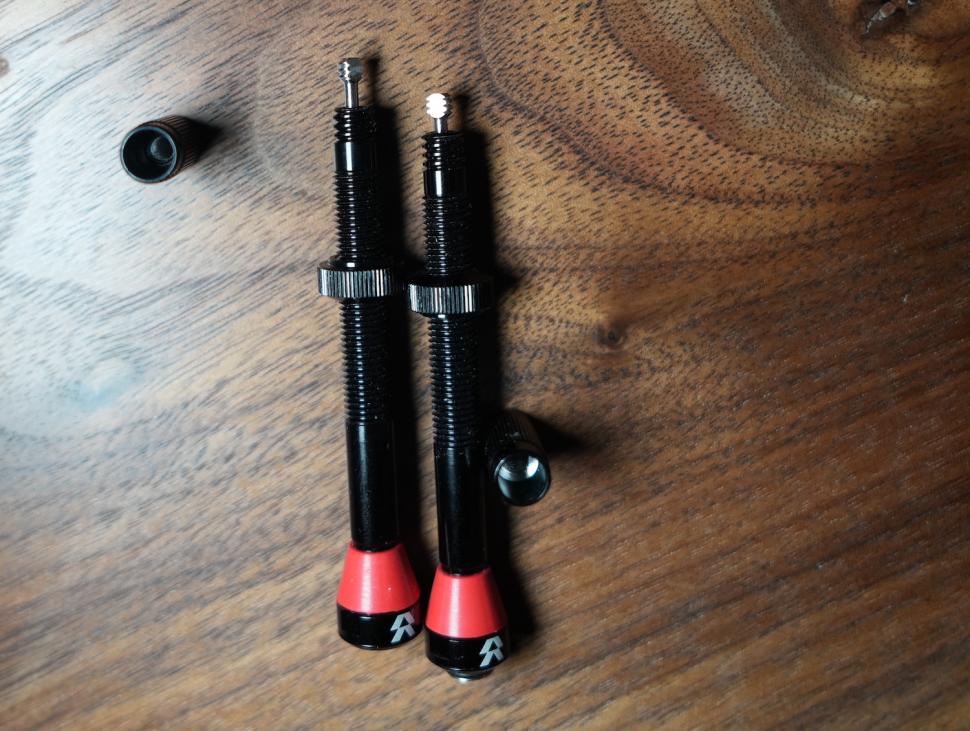
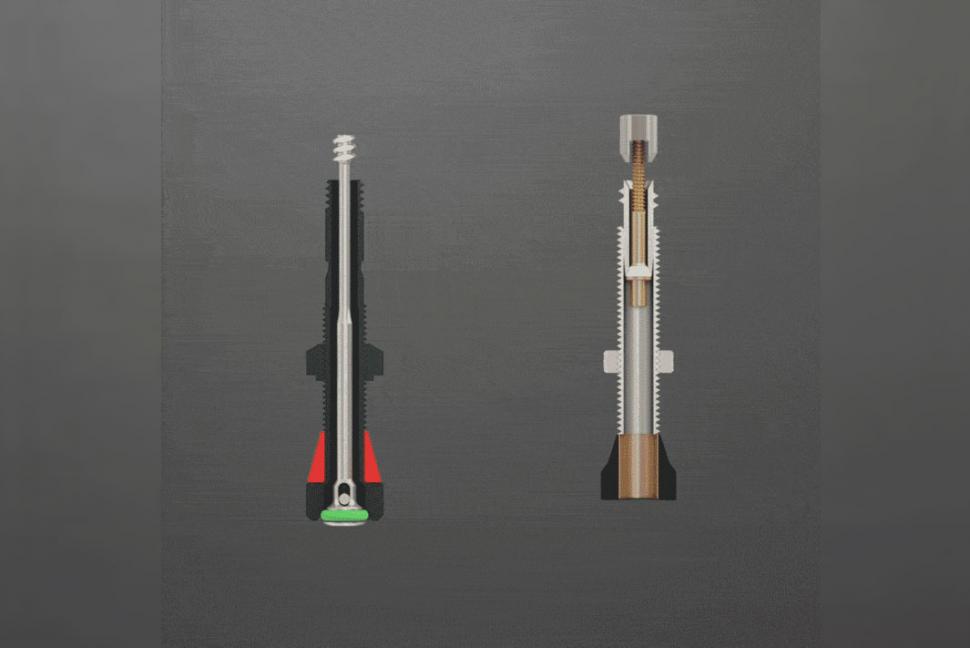






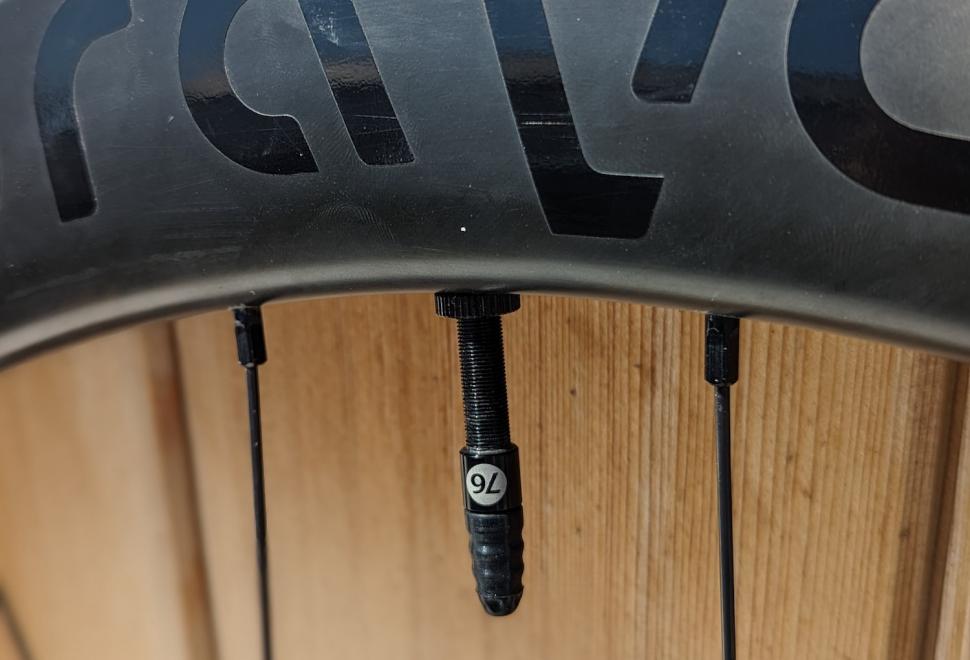
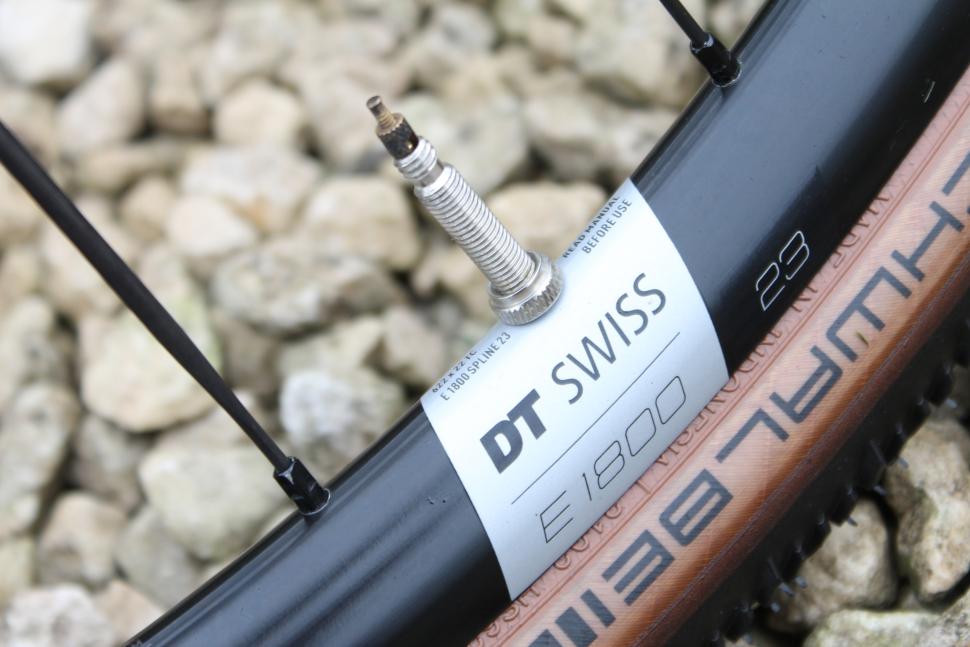

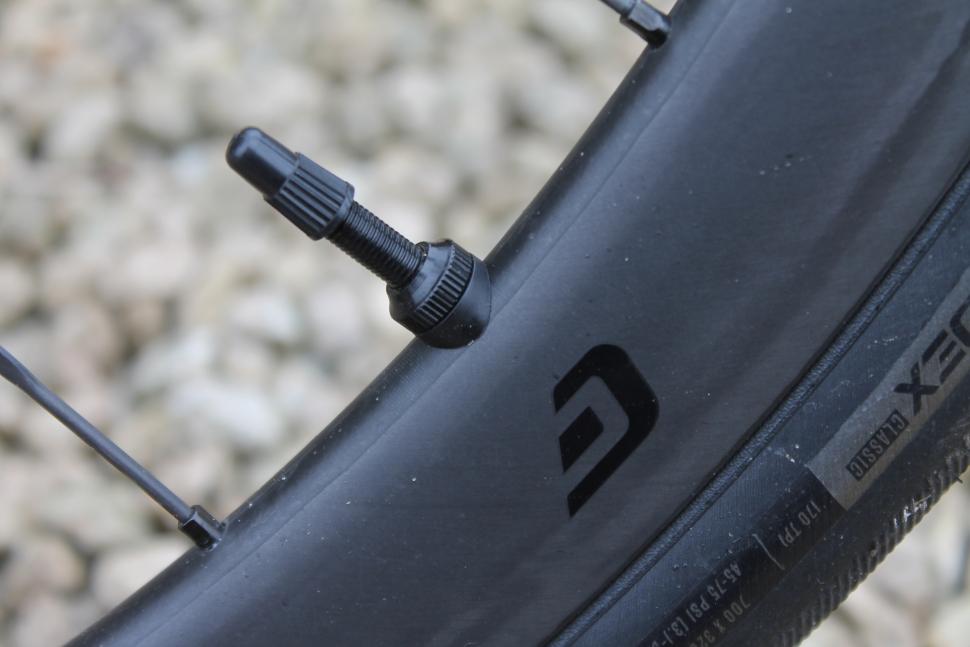

Add new comment
28 comments
One missed Fillmore benefit: they hold air much better. I only need to top of my road tires every two weeks since I switched to Reserve Fillmore valves. I never would have thought so much air was leaking out of Presta valves.
I have noticed this, for my weekly top up before the commute starts again, I don't need my standard twelve pumps, and let out more air.
I'd only run my mud tyres so far and wanted to try another set before mentioning it.
I ran for over 45 years without using a cap or the nut on my Presta valves and never had any problems, even under heavy braking. However, I do have two sets of rims now that are deeper walled than previous rims, so now I use the nut to hold the valve in place so I can pump it up better without having the stem go almost into the rim. And for some reason, modern deep rims click with Presta valves, that could be due to the stem having to be longer thus more movement is possible, I never had that with older style rims, so again the nut prevents that clicking.
The cap is simply not needed with a Presta, dirt can't get down inside the valve like it can with a Schrader. Some people cry about the weight of the caps but at a gram or two at the most, it's not an issue.
45 years, what a waste. Why run, when you could have cycled!
You guys need to upgrade to clinchers with latex tubes 🍿
No problem with fillmore valves and no clogging either.
Pet hate - transparent valve caps. So easy to lose.
Good article and no need to be bashful about dedicating a whole piece to valves, they are important in the tubeless world. I have thoughts.
It’s common to remove a Presta valve core to inflate a tubeless tyre the first time. Once seated, you can disconnect the pump head, attempt to replace the core as quickly as possible before all the air comes out again, and re-inflate
Taking the second point first, really?! When you take the pump head off the air comes out in a whooshy second. However with well behaved TLR tyres and rims, the tyre will stay seated. As to connecting a pump to a presta valve with the core removed - that will not work with any pump I have tried, the pump head has nothing to grab. My workaround has to been to snip the tiny valve part out of a valve core and use that 'empty' core when seating a tyre so the pump can fasten. Especially a re-used tyre can be a struggle to seat but with the empty valve core, and a pressure container like an Airshot, the tyre will jump smartly onto the rim when hit with the fast flow rate. Very satisfying.
As to the tubeless valve locknut, don't do it up more tightly than finger tight. The internal air pressure forces the valve onto the inside of the rim anyway and worst case if you need to remove the valve at the roadside you will be cursing if you find yourself stymied by an immovable valve nut.
What pumps are you trying? Every clamp on type pump head I have ever used works perfectly on an empty presta stem.
Interesting, but my mileage does vary, so to speak.
That is odd. There's a reason every pump manufacturer recommends removing valve cores to seat tubeless tyres too - the pumps are designed to seal on the valve stem, not the core. It's literally this easy...
https://www.youtube.com/watch?v=6lKRYuaxLls&t=386s
Topeak even removes and replaces the core right there within the still-connected pump head:
https://www.topeak.com/global/en/technology/24-TUBIHEAD%C2%AE
My Topeak Turbibooster required the bodge. Upgraded to the Fillmore valves. With added oilslick bits.
good luck with that, I've had a valve core fired out of the valve when removing on a partially inflated tyre. The idea that there will be any pressure left in the tyre after 2-5s from removing the pump to fitting the core is laughable.
2-5 seconds is where you're going wrong. You need to put your index finger over the hole when you take the pump off. We'll do you a video sometime.
The time you take to unblock the hole & get the core back in sealing is easily 2-5secs and you'll have lost a good 20psi in the process.
Wiled away a good half hour sat on a roadside playing that game with a removable core which would not stay set in the valve properly.
Maybe it's easier if there's more than one pair of hands to help.
If you run Milkit valves, then removing the core isn't a problem as there's a rubber flap at the bottom of the valve (i.e. inside the rim).
Sure, but unless you're using a compressor it's a fair bit of effort saved re-filling the last 20 PSI vs every PSI. Doesn't always work for me, but worth trying.
I can get this done on a 28mm tire with 100% success. The airflow cuts down to about 5% just jamming the core back in before threading, and it only takes a second to push it in place after removing your thumb.
I've put a quick video in the article showing how it's done.
There's an important reason why the Jones Bikes 'test' is junk science: viscosity. Water is around 50x more viscous than air, so flows through narrow valves far easier than water. That vid belongs in the engineering bin.
You missed the about correction for Reynolds number?
I'm still wondering what "flow" they're talking about, and why it matters.
Air flow rate matters greatly when inflating a tubeless tyre. An unseated TLR tyre isn't remotely airtight. To get it to seat you need to overwhelm its massive leakiness with a blast of air, maintaining that through initial inflation until the tyre has tightened up enough that it is sealing.
I love tubeless, it's exciting.
I see. It wasn't clear (to me, at least) that that what this was about.
Pumping up a fully deflated non-tubeless tyre with a presta valve can he quite exciting too. Sometimes the valve can stick, so any air you pump into the tyre comes right out again at the end of the pump stroke. Sufficient pressure is never built up to overcome the "stickiness" of the valve. This problem can be overcome pressing the pin bit in the centre of the valve in manually before you start.
I also missed the part about correcting for the valve depth in the water....
The Reynolds number would take account of that, since it includes a density term, which for water isn't going to change much anyway.
Pressure at the different valve/ core heights will change flow rates substantially. The trouble with that video is that it puts nothing into context. Water flow rate differentials through different cores will be completely different from air flow rate differentials at the appropriate pressures for popping tubeless. I get that they're trying to sell their valves, but they could do it in a way that genuinely increases people's understanding. Their demonstration is utterly misleading and promulgates bad science.
Yes, there are some fluid differences. Water is ~ 100 x more viscous (10^-3 Pas vs 10^-5 Pas; laminar vs turbulent flow) and incompressible. Nevertheless, in relative terms between the two valves this might not be important. What is important is showing that this is not important.